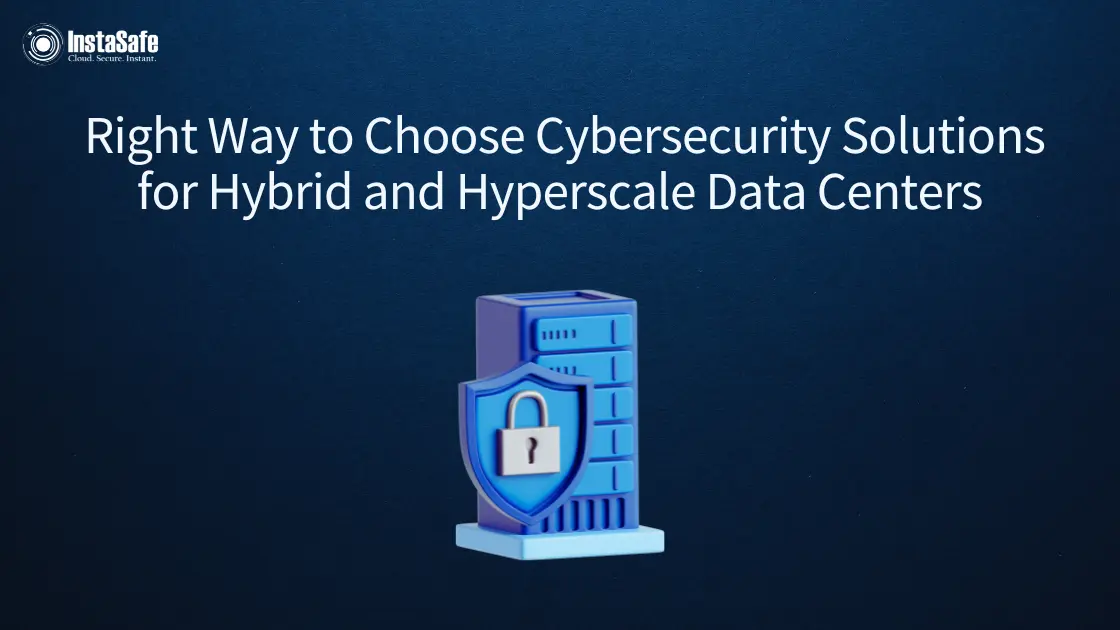Right Way to Choose Cybersecurity Solutions for Hybrid and Hyperscale Data Centers

The complex world of cybersecurity solutions demands strategic vision as organisations increasingly adopt hybrid and hyper-scale data centres. The stakes have never been higher, with cyber threats evolving daily.
Decision-makers must carefully evaluate protection mechanisms that safeguard critical assets without hindering operational efficiency. This guide presents essential considerations for implementing robust hybrid data centre security frameworks that balance protection, performance and scalability.
Cybersecurity Challenges in Hybrid and Hyperscale Data Centres
Expanding Attack Surface
The convergence of on-premises infrastructure with cloud-based computing security creates numerous potential entry points for attackers. This distributed architecture requires specialised protection strategies that many companies struggle to implement effectively across disparate environments.
Compliance and Regulatory Requirements
Organisations face mounting pressure to comply with industry-specific and regional data protection mandates. Robust cyber security in companies must address these requirements while maintaining operational flexibility and avoiding costly penalties for non-compliance.
Threat Landscape
Advanced persistent threats, ransomware and sophisticated social engineering attacks continue targeting hybrid environments. Modern cyber solutions must provide comprehensive protection against these evolving threats while maintaining visibility across the entire infrastructure.
Security Gaps in Traditional Approaches
Conventional security models often create dangerous blind spots between on-premises and cloud environments. These disconnected approaches leave vulnerabilities that attackers can exploit, highlighting the need for integrated cybersecurity solutions.
Factors to Consider When Choosing Cybersecurity Solutions
Scalability and Flexibility
Effective hybrid data centre security must grow alongside your infrastructure without performance degradation. The chosen solutions should offer automation capabilities that minimise manual intervention during scaling events.
Select platforms that provide consistent protection across multiple cloud providers and on-premises environments. The best solutions offer consumption-based models that align security investments with actual usage patterns and growth, preventing over-provisioning or coverage gaps.
Network Security and Zero Trust Architecture
Implement zero trust principles that verify every access request regardless of origin. Modern cybersecurity solutions should include advanced traffic analysis capabilities, even for encrypted data flows.
Deploy micro-segmentation to contain potential breaches and limit lateral movement within your environment. Also, ensure seamless integration with existing identity management systems for unified access control. Cyber security in companies must evolve beyond traditional perimeter defence to protect distributed workloads effectively.
Data Protection and Encryption
Deploy comprehensive encryption mechanisms for data in all states: at rest, in transit and during processing. Effective cyber solutions provide unified key management that works consistently across hybrid environments. Make sure to implement data loss prevention tools that safeguard sensitive information regardless of location.
Utilise automated classification systems that apply appropriate protection based on data sensitivity. Note that cloud-based computing security requires a clear understanding of the shared responsibility model. It ensures your encryption approach complies with cloud provider requirements.
Identity and Access Management (IAM)
Robust IAM forms the cornerstone of effective hybrid data centre security, controlling who accesses critical resources and when. Implement multi-factor authentication across all environments to verify user identities. Privileged access management tools limit high-level permissions and monitor administrator activities.
Also, role-based access control ensures users have only the necessary permissions. Modern cyber solutions should eliminate authentication barriers that cause security issues and user annoyance by unifying identity management across on-premises and cloud platforms.
AI-Driven Threat Detection and Response
Advanced cybersecurity solutions now leverage artificial intelligence to identify suspicious patterns that traditional tools miss. AI-powered systems continuously analyse network traffic, user behaviour and system logs across hybrid environments to detect anomalies.
These solutions reduce false positives while accelerating incident response through automation. Cloud-based computing security particularly benefits from AI's ability to process massive datasets from distributed sources.
Look for platforms offering automated remediation capabilities that contain threats before they spread throughout your infrastructure.
Compliance and Regulatory Adherence
Comprehensive cyber security in companies must address industry-specific regulations like GDPR, HIPAA, PCI DSS and emerging data protection laws. Thus, select solutions that provide built-in compliance frameworks with regular updates as regulations evolve. Further, automated compliance reporting reduces audit preparation time and costs.
Data sovereignty features should also be considered to ensure sensitive information remains in approved jurisdictions. The best cyber solutions offer customisable policies that maintain compliance without disrupting business operations across complex hybrid environments.
Edge Security Considerations for Hybrid Deployments
The expansion of edge computing within hybrid data centre security frameworks introduces unique security challenges. You must protect distributed edge nodes with lightweight security agents that don't compromise performance. In addition, secure boot mechanisms and hardware-based root of trust should also be implemented.
Ensure encrypted communications between edge devices and centralised resources. Cybersecurity solutions must maintain consistent policy enforcement across edge locations while accommodating limited computational resources and intermittent connectivity common in edge deployments.
Best Practices for Implementing Cybersecurity in Hybrid and Hyperscale Data centres
Conducting a Risk Assessment
Begin with thorough evaluation of assets, vulnerabilities and threats specific to your hybrid data centre security environment before selecting appropriate cyber solutions.
Security Monitoring
Implement 24/7 monitoring across all environments to detect suspicious activities early and ensure cybersecurity solutions function effectively in dynamic hybrid infrastructures.
Employee Awareness and Training
Regularly educate staff about emerging threats and security protocols, as human error remains a significant vulnerability in cyber security in companies.
Incident Response and Disaster Recovery Planning
Develop detailed response procedures for security incidents, ensuring business continuity despite attacks on cloud-based computing security or on-premises systems.
Conclusion
Selecting the right cybersecurity solutions for hybrid and hyper-scale environments requires balancing protection, performance and compliance.
By methodically addressing these key factors, organisations can build resilient security architectures that adapt to evolving threats. Remember that effective hybrid data centre security is an ongoing journey rather than a destination, demanding continuous evaluation and refinement.
At InstaSafe, our cutting-edge MFA safeguards environments against sophisticated threats without compromising user experience. Choose InstaSafe's Multi-Factor Authentication solution to ensure regulatory compliance while providing unified, frictionless protection across your entire data centre ecosystem.
Frequently Asked Questions (FAQs)
- What are the requirements for a hyperscale data centre?
Massive scale (5000+ servers), enormous power capacity, advanced cooling systems, high-density racks and sophisticated automation. These facilities support cloud-based computing security through redundant systems and continuous expansion capabilities.
- How to strengthen security best practices in a data centre?
Implement multi-factor authentication, zero-trust architecture, regular security audits and employee training. Hybrid data centre security requires consistent monitoring, strict access controls and comprehensive cyber solutions across physical and virtual environments.
- What is the security standard for data centres?
ISO 27001, SSAE 18/SOC 2, PCI DSS and NIST frameworks provide comprehensive cybersecurity solutions. These standards ensure companies maintain proper access controls, encryption, threat detection and incident response procedures across facilities.
- What is the difference between a hyperscale data centre and data centre?
Hyperscale facilities operate at massive scale with 5000+ servers, advanced automation, proprietary hardware and specialised cyber solutions. Traditional data centres are smaller with standardised equipment, serving fewer organisations with more conventional cloud-based computing security.
